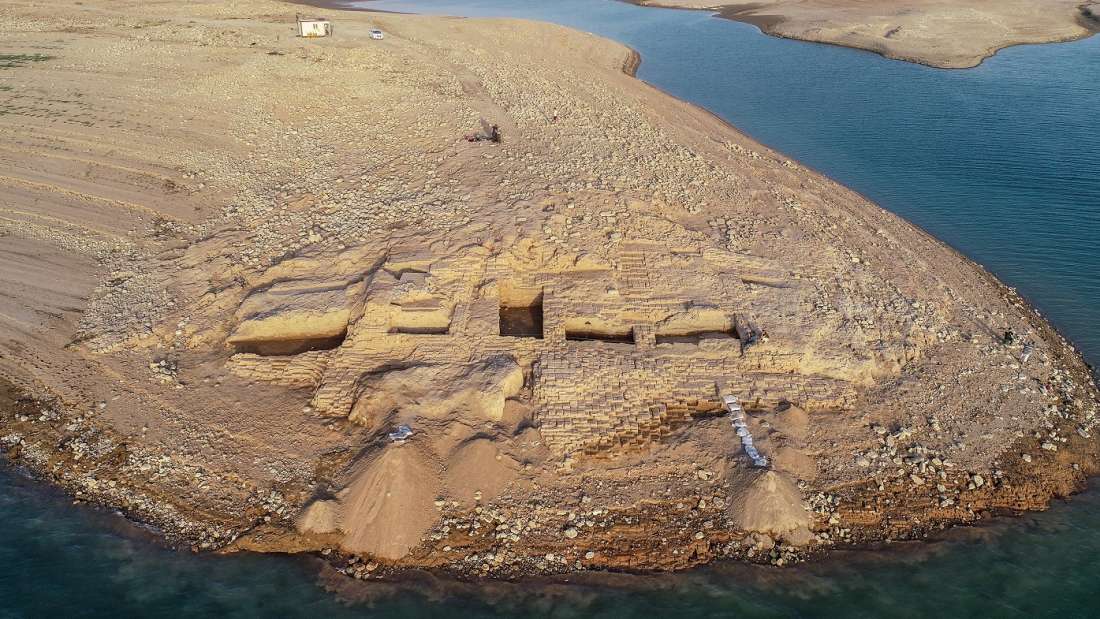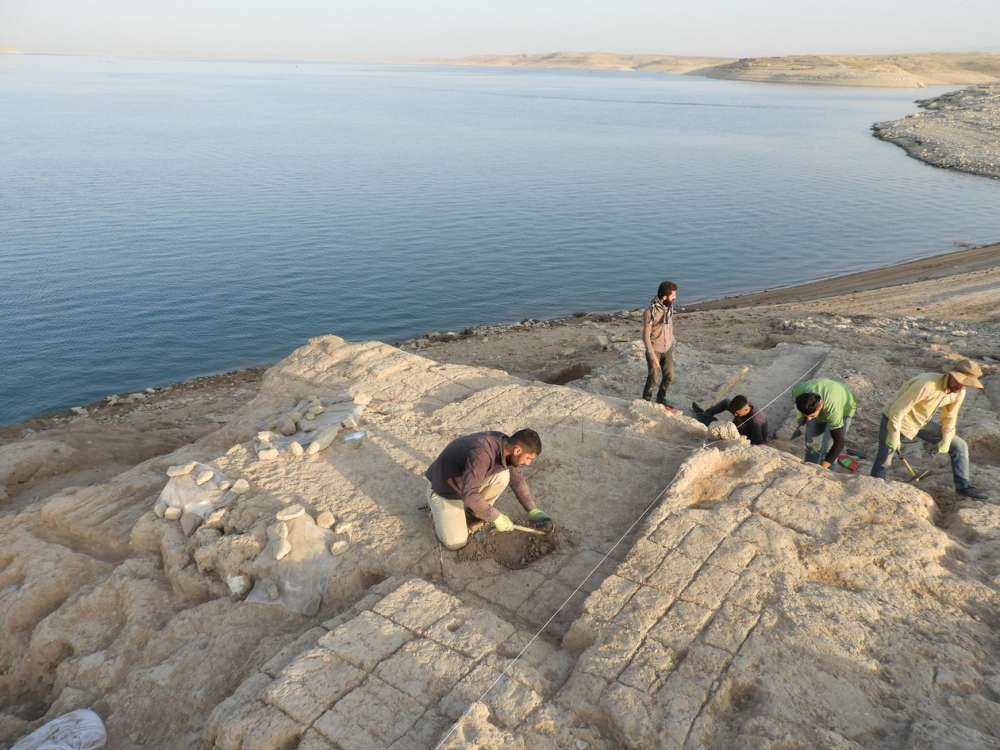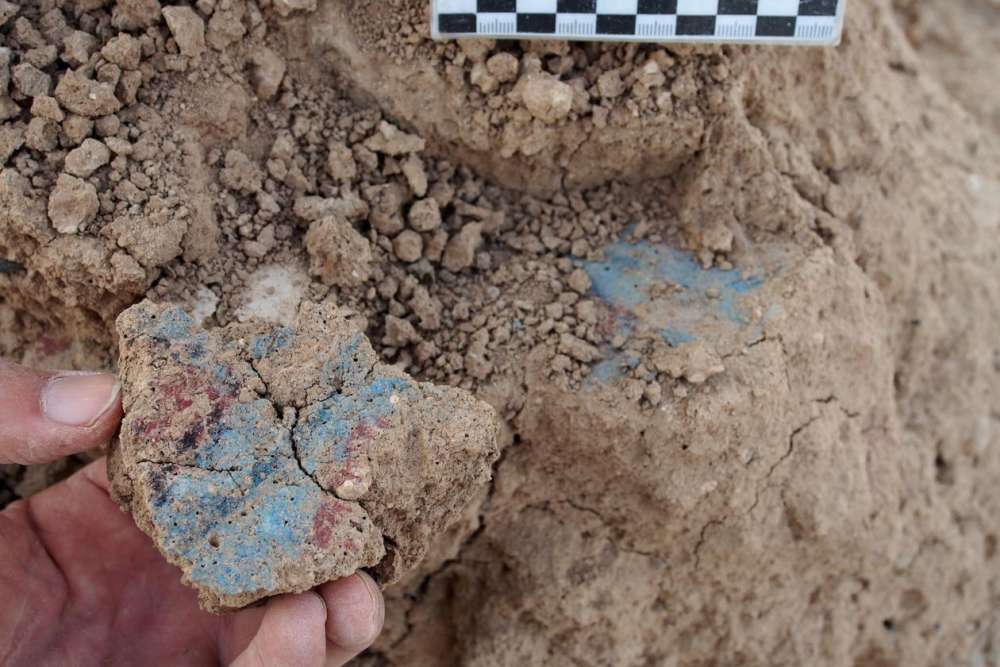A team of
Kurdish and German archeologists has excavated a Bronze Age palace in the
Kurdistan Region of Iraq, one they say can be dated to the Mittani Empire 3,500
years ago.
"The
find is one of the most important archaeological discoveries in the region in
recent decades and illustrates the success of the Kurdish-German
cooperation," Hasan Ahmed Qasim, an archaeologist involved in the dig,
said in a press release.
The grand
reveal took place after a drought caused water in a reservoir checked by the
Mosul Dam to retreat, exposing the remains of an ancient building. This
required an intensive effort to survey the site before the water returned and
buried the remains (once again).
Within a
short time-frame, the team was able to partially excavate eight of the 10 rooms
- finding floor slabs made of fired bricks and murals painted with red and blue
pigments.
The
excavations on the shore of Mosul Dam; a room in Kemune Palace in which murals
were found. University of Tübingen, eScience Center, and Kurdistan Archaeology
Organization
"In the
second millennium BCE, murals were probably a typical feature of palaces in the
Ancient Near East, but we rarely find them preserved," Ivana Puljiz of the
Tübingen Institute for Ancient Near Eastern Studies (IANES) explained.
These
tablets are now being translated but the archaeologists have already said one
suggests the site (Kemune) may, in fact, be the ancient city of Zakhiku.
Zakhiku has been name-dropped in an Ancient Near Eastern source dating to 1,800
BCE. And so this new find, the archeologists say, suggests the city must have
existed for 400 years or more. This, they hope, will be confirmed (or
disproven) when more of the text is translated.
They say the
palace would have once stood on an elevated terrace overlooking the valley and
just 20 meters away from what was then the eastern bank of the Tigris River.
The palace ruins are preserved to a height of some 7 meters. Two phases of
usage are clearly visible, Puljiz says, indicating that the building was in use
for a very long time.



Comments
Post a Comment